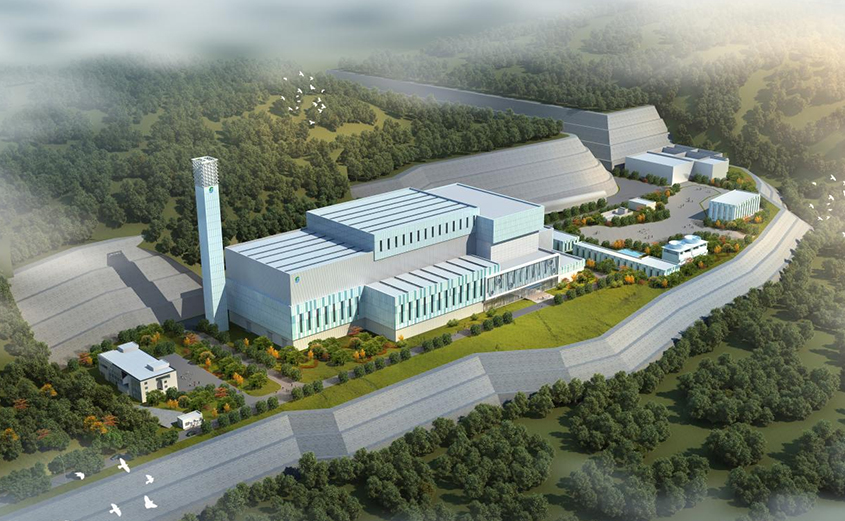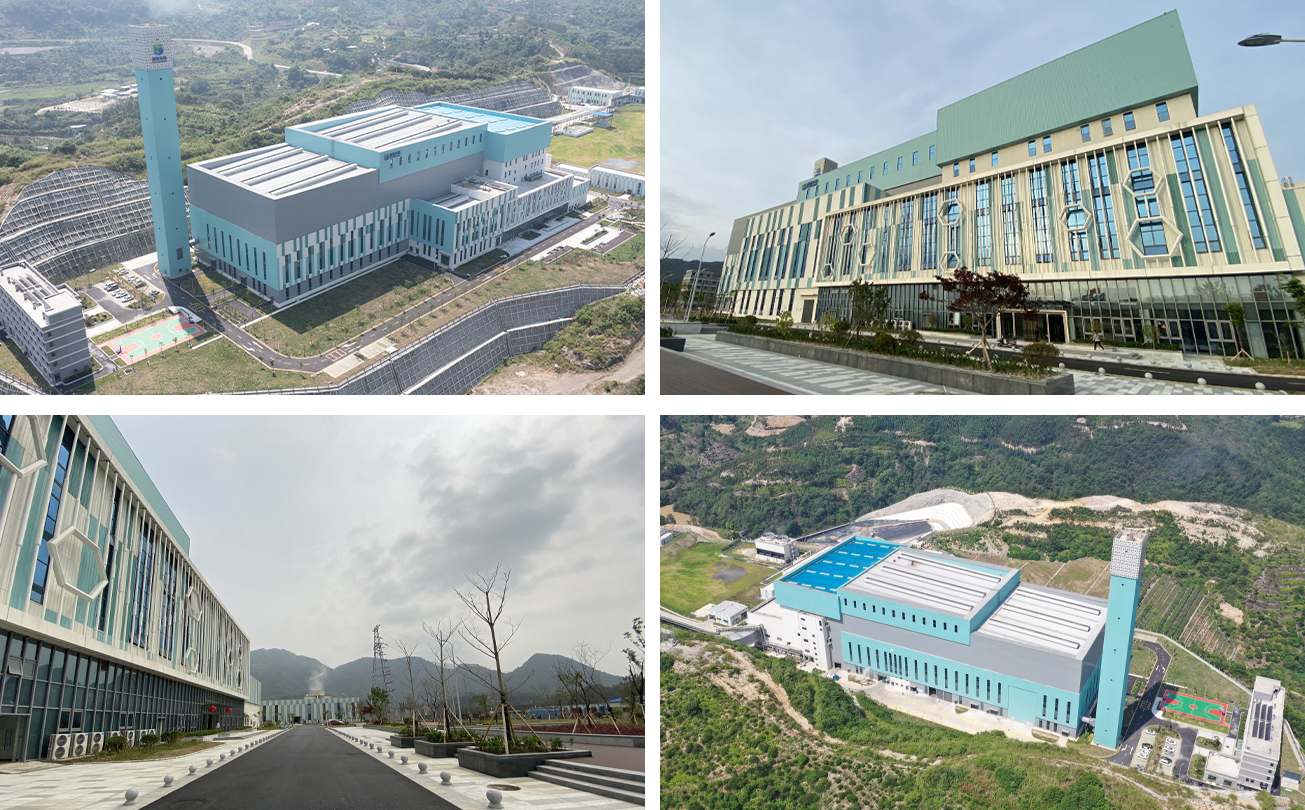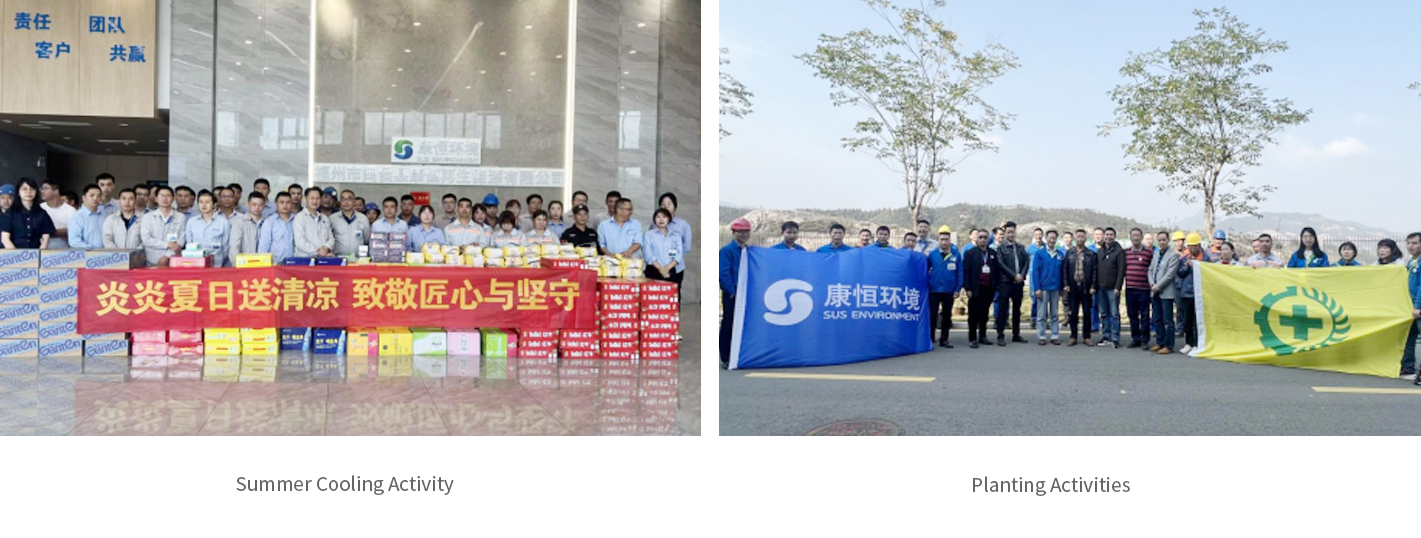Scan the QR-Code to Follow our WeChat Official
Account to Get the Latest News

Project address:Minhou County, Hongwei Township, Minhou County, Kui Shi Village, Gerry Natural Village, Fuzhou City, Minhou SUS Renewable Energy Co., Ltd.
Appointment visit contact phone number:+86 0591-62338905
The Minhou Environmental Protection and Ecological Industry Park (Phase I of Waste Resource Utilization) is situated in Grizhi Natural Village, Kui Shi Village, Hongwei Township, Minhou County, Fuzhou City. Its primary objective is the harmless, reduction, and resource utilization treatment of household waste within the locality. Currently phase I of the project has a daily processing capacity of 600 tons of household waste. While construction commenced in January 2019, official operations started on December 30, 2021.
With a total design capacity to process 1,200 tons of household waste per day, the project is divided into two construction phases. Phase I is capable of handling 220,000 tons of household waste annually and generates 75 million kilowatt-hours of electricity for grid connection. This electricity production can effectively meet the annual energy needs of approximately 25,000 households, each comprising three members.


1. "De-industrialization" Design Approach
The overall design concept of the Minhou project, overseen by China United Engineering Corporation, features a distinctive de-industrialization theme. External aesthetics are characterized by a refreshing blue-green color, seamlessly integrating the signature "honeycomb" concept of SUS through hexagonal elements. This symbolic representation mirrors the process of waste collection and transportation from urban and rural areas to the waste-to-energy plant, analogous to the diligent activities of bees gathering pollen, returning to the hive, producing honey, and sharing it with the world.

2. Implementation of SUS's Three-Stage Drop-Type Grate for Stable Combustion
The project harnesses the environmentally innovative and nationally recognized mechanical grate furnace by SUS. This furnace addresses the specific challenge posed by the high moisture content and low calorific value of domestic waste. It is equipped with a third-generation combustion control system developed independently which significantly enhances combustion efficiency and power generation capability.
3. Enhanced Power Generation Efficiency through Medium-Temperature Sub-High-Pressure Steam Parameters
Utilizing medium-temperature sub-high-pressure steam parameters coupled with high-speed turbines, the project achieves a notable increase in power generation efficiency. This configuration enables the generation of approximately 500 kilowatt-hours of electricity per ton of household waste processed.
4. Adoption of "Seven-Step Method" Flue Gas Purification Technology for Emission Reduction
Expanding upon the conventional "Five-Step Method" flue gas purification system, the project integrates additional processes such as "wet scrubber desulfurization tower" and "selective catalytic reduction denitrification." As a result, flue gas emissions conform comprehensively to the stringent standards outlined in GB18485-2014 "Pollution Control Standards for Waste-to-Energy," with certain indicators surpassing the stringent EU 2010/75/EU emission standards.
5. Community Engagement through Openness and Mutual Benefits
Aligned with the Ministry of Ecology and Environment's requirements for "joint tree planting," the project incorporates automatic pollution source monitoring equipment and strategically positions display screens at prominent locations near the factory entrance. This facilitates public oversight of real-time emission data, fostering transparency and accountability. Moreover, recreational facilities such as basketball courts within the project premises are made accessible to the public on a regular basis, fostering a sense of community involvement and collaboration in the pursuit of a green and sustainable living.
1. "De-industrialization" Design Approach
The overall design concept of the Minhou project, overseen by China United Engineering Corporation, features a distinctive de-industrialization theme. External aesthetics are characterized by a refreshing blue-green color, seamlessly integrating the signature "honeycomb" concept of SUS through hexagonal elements. This symbolic representation mirrors the process of waste collection and transportation from urban and rural areas to the waste-to-energy plant, analogous to the diligent activities of bees gathering pollen, returning to the hive, producing honey, and sharing it with the world.

2. Implementation of SUS's Three-Stage Drop-Type Grate for Stable Combustion
The project harnesses the environmentally innovative and nationally recognized mechanical grate furnace by SUS. This furnace addresses the specific challenge posed by the high moisture content and low calorific value of domestic waste. It is equipped with a third-generation combustion control system developed independently which significantly enhances combustion efficiency and power generation capability.
3. Enhanced Power Generation Efficiency through Medium-Temperature Sub-High-Pressure Steam Parameters
Utilizing medium-temperature sub-high-pressure steam parameters coupled with high-speed turbines, the project achieves a notable increase in power generation efficiency. This configuration enables the generation of approximately 500 kilowatt-hours of electricity per ton of household waste processed.
4. Adoption of "Seven-Step Method" Flue Gas Purification Technology for Emission Reduction
Expanding upon the conventional "Five-Step Method" flue gas purification system, the project integrates additional processes such as "wet scrubber desulfurization tower" and "selective catalytic reduction denitrification." As a result, flue gas emissions conform comprehensively to the stringent standards outlined in GB18485-2014 "Pollution Control Standards for Waste-to-Energy," with certain indicators surpassing the stringent EU 2010/75/EU emission standards.
5. Community Engagement through Openness and Mutual Benefits
Aligned with the Ministry of Ecology and Environment's requirements for "joint tree planting," the project incorporates automatic pollution source monitoring equipment and strategically positions display screens at prominent locations near the factory entrance. This facilitates public oversight of real-time emission data, fostering transparency and accountability. Moreover, recreational facilities such as basketball courts within the project premises are made accessible to the public on a regular basis, fostering a sense of community involvement and collaboration in the pursuit of a green and sustainable living.





Scan the QR-Code to Follow our WeChat Official
Account to Get the Latest News